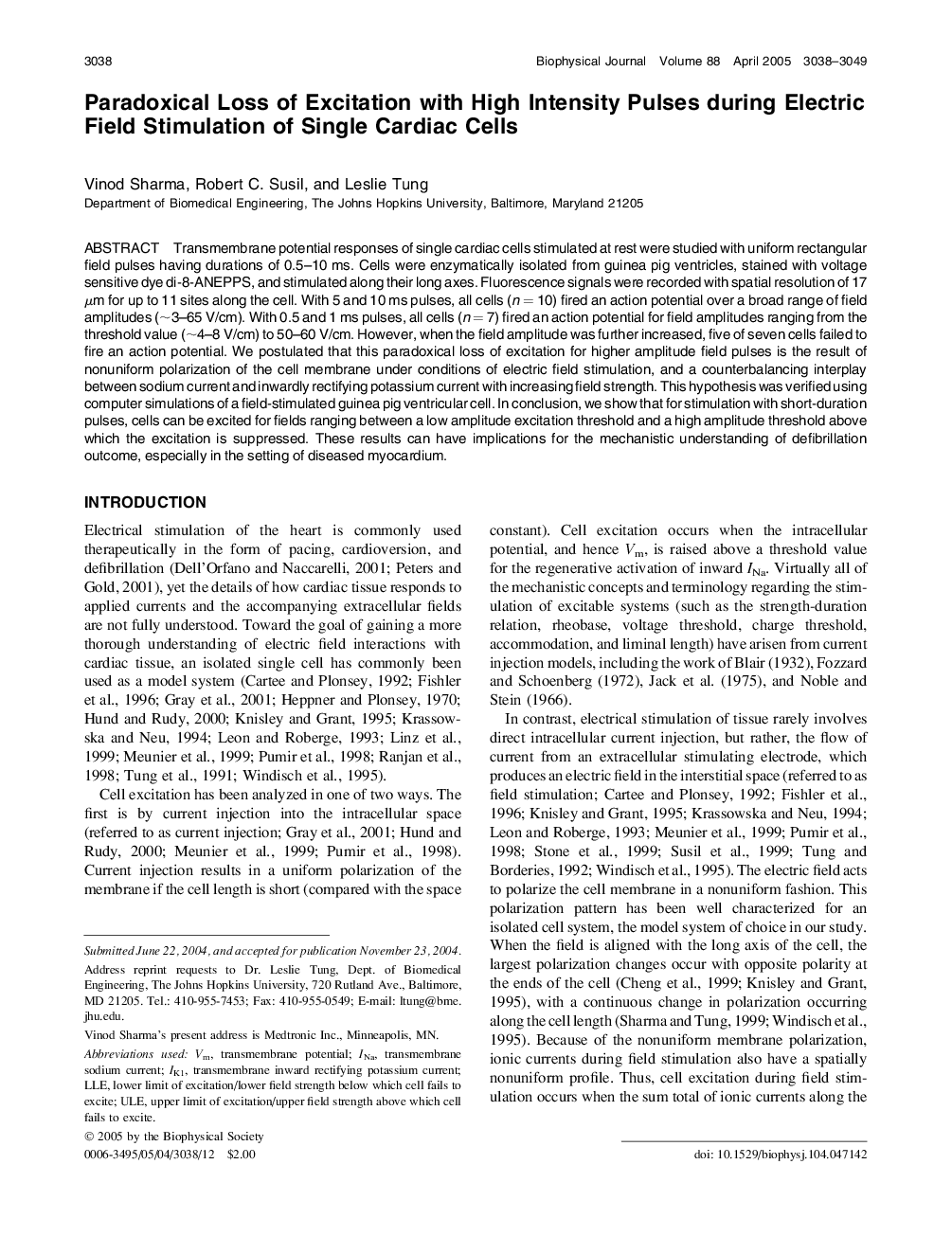| Article ID | Journal | Published Year | Pages | File Type |
|---|---|---|---|---|
| 1959594 | Biophysical Journal | 2005 | 12 Pages |
Transmembrane potential responses of single cardiac cells stimulated at rest were studied with uniform rectangular field pulses having durations of 0.5–10 ms. Cells were enzymatically isolated from guinea pig ventricles, stained with voltage sensitive dye di-8-ANEPPS, and stimulated along their long axes. Fluorescence signals were recorded with spatial resolution of 17 μm for up to 11 sites along the cell. With 5 and 10 ms pulses, all cells (n = 10) fired an action potential over a broad range of field amplitudes (∼3–65 V/cm). With 0.5 and 1 ms pulses, all cells (n = 7) fired an action potential for field amplitudes ranging from the threshold value (∼4–8 V/cm) to 50–60 V/cm. However, when the field amplitude was further increased, five of seven cells failed to fire an action potential. We postulated that this paradoxical loss of excitation for higher amplitude field pulses is the result of nonuniform polarization of the cell membrane under conditions of electric field stimulation, and a counterbalancing interplay between sodium current and inwardly rectifying potassium current with increasing field strength. This hypothesis was verified using computer simulations of a field-stimulated guinea pig ventricular cell. In conclusion, we show that for stimulation with short-duration pulses, cells can be excited for fields ranging between a low amplitude excitation threshold and a high amplitude threshold above which the excitation is suppressed. These results can have implications for the mechanistic understanding of defibrillation outcome, especially in the setting of diseased myocardium.
